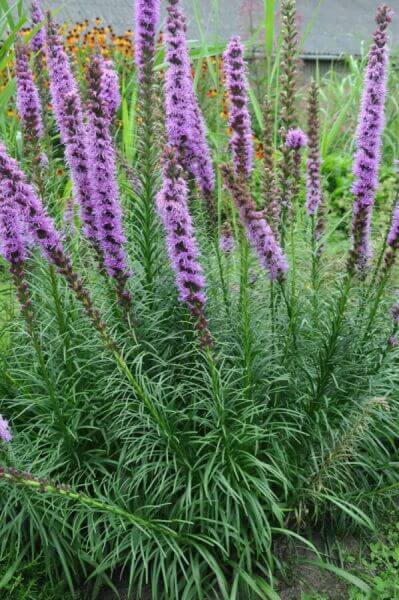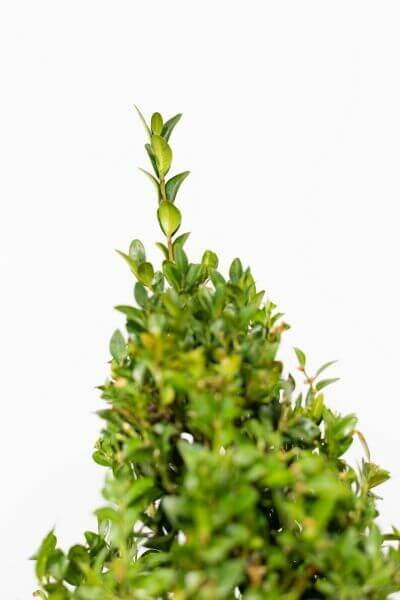Best Hedging Plants For Green Dividers
Best Hedging Plants For Green Dividers
Blog Article
Hedging Plants For Urban Spaces
Boost your garden's allure with lush hedge ranges such as Yew (Taxus), Thuja, Laurel, Photinia, and Bamboo, celebrated for their structural integrity and environmental advantages.
Yew and Thuja provide evergreen protection and winter strength, while Laurel offers fast development and broad, fragrant leaves.
Photinia includes seasonal beauty with its vibrant red foliage, and Bamboo provides a low-maintenance, tranquil ambiance.
These hedges improve air quality, lower noise, and produce tranquil, personal areas.
Proper planting, spacing, and maintenance make sure vigorous development and eco-friendly harmony.
Explore how these rich ranges can raise your garden's beauty and well-being.
Key Takeaways
Change Your Garden With Lush Hedge Ranges
- Select Yew for its dense, evergreen growth and unrivaled durability.
- Go with Laurel for its fast growth and broad leaves, guaranteeing fast personal privacy.
- Pick Photinia for its lively seasonal foliage, which turns a striking dark red.
- Make use of Bamboo for a low-maintenance, winter-hardy hedge with visual appeal.
- Space plants 2-3 per meter and prune regularly for optimal growth and health.
Popular Hedge Plants
When transforming a garden with lush hedge varieties, it's important to think about popular hedge plants such as Yew, Thuja, Laurel, and Photinia due to their special attributes and advantages.
Yew (Taxus) is highly respected for its durability and thick, green growth, making it a prime choice for withstanding landscapes.
Thuja is noted for its evergreen foliage and robust winter resilience.
Photinia adds seasonal vibrancy with red leaves that darken with time, creating dynamic visual appeal.
Laurel offers quick development and aromatic, broad leaves, perfect for fast privacy.
Additionally, Bamboo is an excellent choice for ambiance, offering a low-maintenance, winter-hardy alternative that boosts the garden's visual with its stylish, swaying canes.
These choices accommodate a variety of horticultural needs and choices.
Advantages of Garden Hedges
Garden hedges provide a wide variety of advantages, making them a valuable addition to any landscape. These natural barriers are cost-effective to carry out and supply considerable wind defense, boosting air flow and contributing to sound decrease. The dense foliage of hedges like Thuja and Beech makes sure privacy by blocking exposure, creating a tranquil and secluded environment.
Hedges likewise play a vital role in microclimate guideline, offering a steady environment that promotes plant development and lessens temperature fluctuations. Their complex leaf structures filter pollutants, enhancing air quality and contributing to a healthier garden ecosystem.
Additionally, hedges master noise decrease, absorbing and deflecting acoustic waves to lower ambient noise levels. This double functionality of supplying both visual and acoustic personal privacy enhances the total tranquility and aesthetic appeal of any garden.
Planting and Upkeep Tips
For an effective hedge, careful preparation of the planting area is important. Guarantee the soil has proper pH and drain to support strong root advancement.
Space the plants appropriately for the selected species. Water the hedge regularly during its initial development stage, changing as needed with seasonal changes.
Execute a organized bug control and disease prevention strategy, using natural or chemical treatments when necessary. Regularly inspect for aphids, mites, and fungal infections.
Apply mulch to keep wetness and suppress weeds. Seasonal pruning promotes thick development and air flow, essential for plant health.
Following these guidelines will help you cultivate a dynamic, properly maintained hedge that boosts the beauty of your garden.
Spacing and Cutting Standards
Spacing and Cutting Standards
Correct spacing and trimming are essential for cultivating healthy, visually appealing hedges. Sufficient spacing guarantees each plant receives sufficient nutrients, light, and airflow.
Follow these guidelines for optimal hedge maintenance:
- Spacing: Position hedge plants 2-3 plants per meter to encourage robust growth.
- Pruning Techniques: Routine pruning is necessary for keeping wanted hedge height and shape. Cut brand-new growth in summer and cut back older wood throughout winter season.
- Seasonal Care: Change trimming approaches and schedules according to seasonal requirements to make sure plant health.
- Hedge Height: Routinely screen and trim to maintain the wanted hedge height and accomplish uniform visual appeals.
Adhering to these steps will guarantee your hedge prospers, improving both the appeal and functionality of your garden.
Selecting the Right Hedge
Choosing the Right Hedge
Picking the proper hedge involves examining factors such as mature height, foliage density, and ecological durability. Successful hedge plant choice requires comprehending each species' growth attributes and site-specific adaptability.
For instance, Yew (Taxus) uses exceptional longevity and thick growth, while Thuja is significant for its winter strength. Furthermore, thinking about maintenance requirements is vital; fast-growing species like Laurel or Privet need routine trimming, whereas low-maintenance alternatives like Bamboo or Ivy might be more effective for those seeking very little upkeep.
Environmental aspects such as soil type, light schedule, and wetness conditions should likewise guide the choice procedure. This careful method makes sure the selected hedges will grow, offering both visual and functional benefits to the garden landscape.
Shipment and Planting Advice
To ensure your hedge plants prosper, they need to be delivered by specialized couriers and planted immediately upon arrival.
Follow these essential steps for successful planting:
- Soil Preparation: Improve the soil with natural matter to improve drainage and nutrient content.
- Planting Depth: Produce a trench two times the width and equivalent to the depth of the root ball.
- Watering Strategies: Water completely after planting, keeping the soil consistently damp however not filled.
- Mulching: Use a layer of mulch to retain moisture and suppress weeds.
Client Support and Service
Provided the vital function of prompt help in horticultural pursuits, our customer support team is offered six days a week through telephone, email, and social media to provide professional recommendations and promptly deal with any concerns. Their commitment to quick response times ensures customer complete satisfaction by fixing inquiries associated with plant health, ideal planting techniques, and maintenance schedules.

Schedule
-----------------
Within 24 hours
This thorough support group, strengthened by an outstanding 9.3/ 10 client score, highlights our commitment to boosting the gardening experience for every single customer.
Frequently Asked Concerns
For How Long Does It Consider Hedge Plants to Develop?
Hedge plants normally need one to three years to end up being fully developed, with the specific period varying by types and growing conditions.
Effective care during this important period is vital for robust growth. Constant watering, vigilant weed control, and suitable fertilizer application are pivotal in promoting strong root development.
For instance, fast-growing species like Laurel may develop faster, while slower-growing varieties such as Yew might take longer. Thorough maintenance speeds up the facility process, resulting in thick and healthy hedges.
What Are the Best Hedge Plants for Privacy?
The concern of the finest hedge plants for privacy involves assessing evergreen and deciduous alternatives.
Evergreen hedges like Thuja, Laurel, and Cypress provide year-round coverage, guaranteeing constant personal privacy.
On the other hand, deciduous hedges such as Beech offer seasonal privacy, shedding leaves in colder months.
Key upkeep pointers for personal privacy hedges consist of routine cutting, fertilizing in spring, and proper spacing-- typically 2 to 3 plants per meter.
Additionally, consistent watering and diligent weed removal are essential for promoting healthy, dense growth.
Can Hedge Plants Attract Wildlife to My Garden?
Yes, hedge plants can attract wildlife to your garden by providing essential benefits like shelter, food, and nesting sites, thereby boosting regional biodiversity. For circumstances, yew, holly, and laurel are exceptional for bring in birds, while ivy supports a range of bugs.
Nevertheless, it is necessary to note that there are some drawbacks, such as increased upkeep to handle insects and regular maintenance. Thoroughly selecting and keeping hedge ranges can help balance these downsides and benefits, eventually promoting a dynamic and sustainable environment in your garden.
Are There Any Blooming Hedge Plants Available?
Yes, there are flowering hedge plants offered that can enhance the appeal of your garden.
For example, Elaeagnus, likewise understood as Olive Willow, produces fragrant white flowers in the fall, including a touch of elegance.
Photinia, another popular option, showcases dynamic red leaves that mature into a rich green, developing a dynamic visual result throughout the seasons.
To guarantee these plants thrive, it's vital to practice proper pruning strategies and seasonal maintenance, such as trimming brand-new growth in the summertime and cutting back in the winter.
These procedures will help preserve the health and visual appeal of your blooming hedges.
How Do I Prevent Insects in My Hedge Plants?
To avoid pests in hedge plants, employ natural insect control approaches and maintain appropriate hedge care. Present beneficial insects like ladybugs, which take advantage of damaging pests, to produce a well balanced environment.
Frequently inspect your hedges for signs of invasion and promptly remove any affected parts to prevent the spread. Guarantee the health of your hedges by using well balanced fertilizers and supplying appropriate water.
Make use of mulching to maintain soil wetness and proper spacing to decrease plant stress and promote robust growth. These practices collectively help in reducing insect problems and preserving a healthy hedge.
Conclusion
In essence, selecting the best Additional info hedge varieties such as Yew, Thuja, and Laurel can transform any garden into a peaceful haven. These plants provide year-round plant, boost visual appeal, and deal practical benefits like noise decrease and wind defense.
Appropriate planting methods, accurate spacing, consistent watering, and seasonal cutting are crucial for ideal growth.
Reputable delivery services and expert consumer assistance ensure a smooth experience from purchase to planting, making it easier than ever to elevate your outside area.
Garden hedges offer a multitude of advantages, making them a valuable addition to any landscape. These natural barriers are cost-effective to carry out and offer significant wind defense, enhancing air blood circulation and contributing to sound reduction. The thick foliage of hedges like Thuja and Beech ensures personal privacy by obstructing presence, creating a secluded and tranquil environment.

Pruning Techniques: Routine pruning is essential for maintaining wanted hedge height and shape. Cut brand-new growth in summer season and cut back older wood throughout winter.
Report this page